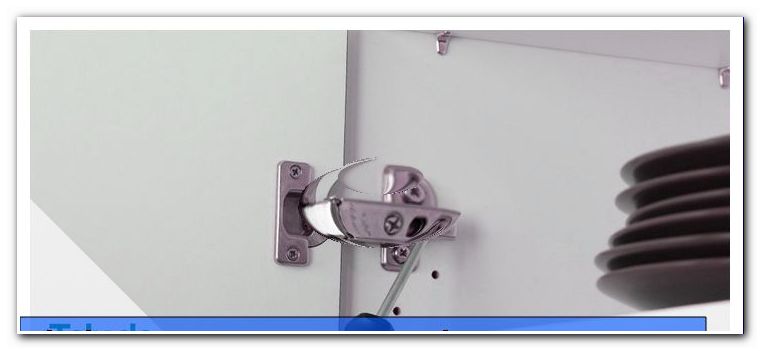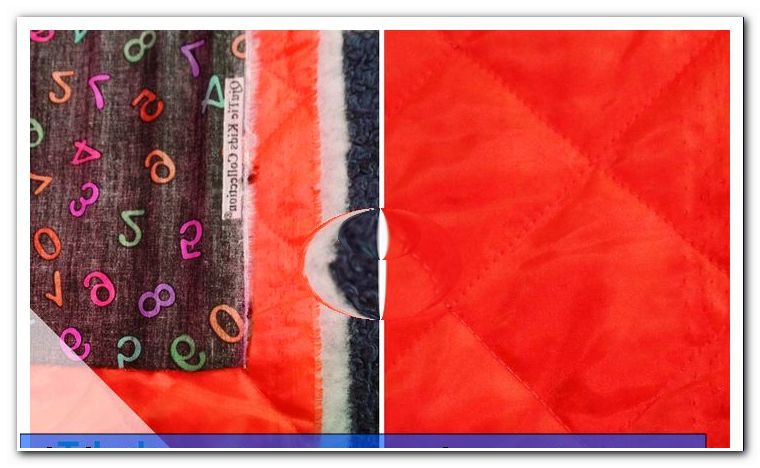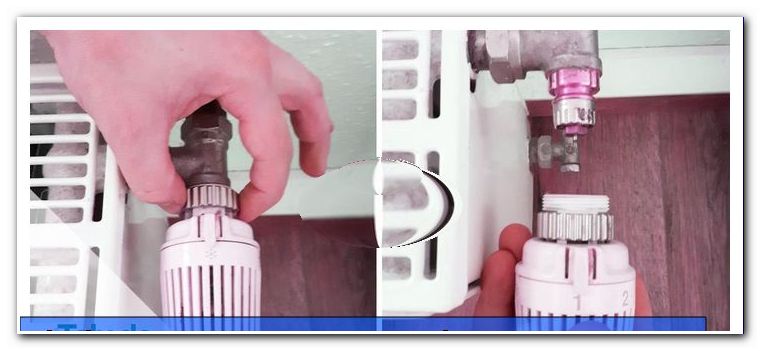Paint latex paint - you should pay attention!

- Real latex paint
- Prepare the ground
- Removal of the wipeable paint
- Cover modern latex paint
- Prepare the wall
- Prevent mistakes and cracks
- Coat latex paint with latex
- Mix latex paint
Covering latex paint sounds easy, but quickly turns out to be a difficult project. Because just as dirt on the smooth surface does not adhere, other color is not absorbed. And even if the emulsion paint has been applied successfully, the coverage is often insufficient. Nevertheless, the following tips make it possible to paint over the latex paint.
Wipeable and impermeable to water, latex paint is extremely practical, especially in rooms with high humidity but also in heavily frequented areas. If it no longer looks like or should be replaced with emulsion paint, however, it becomes a problem - because it can only be painted over with the correct procedure with a different color. However, if you have the right knowledge, you can do without the use of a professional painter.
Real latex paint
Wall paint with real latex, so the addition of natural rubber, has become rare in the trade, as it is very expensive in comparison. Both the overpainting and the overcoating on the real latex paint is very difficult but still not impossible in every case. Here it depends above all on the preparation of the underground.
Prepare the ground
If genuine latex is to be painted over, the old paint must first be roughened and clean. For this purpose, it is evenly processed with an orbital sander and subsequently aspirated. The more the old paint is removed, the greater the chances that the fresh emulsion paint will hold and cover well. Especially with older and real latex paints the success is not guaranteed. Instead of tackling the entire wall at once, the procedure should first be tested in an inconspicuous place.

If this procedure does not lead to the desired result, then more than just the uppermost color layer must be removed.
Removal of the wipeable paint
Regardless of whether the real latex paint is as a paint on wallpaper or directly on plaster, the procedure described above is not enough, the paint must be removed.
In the case of wallpaper, a spiked roller or a wallpaper hedgehog is used in the first operation to make the substrate selectively permeable to water or steam. Subsequently, the wallpaper is thoroughly moistened with a solution of warm water and dishwashing detergent or with a steam cleaner. Through spatulas or scratches the latex coated paint can now be removed relatively easily. If the wall is dry after one to two days, it can be re-wallpapered and painted.
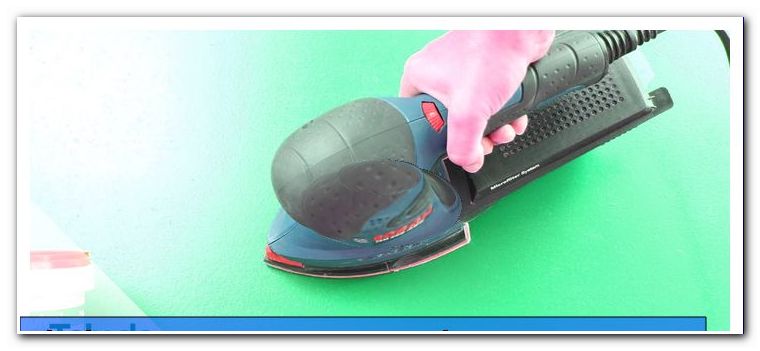
With a latex paint directly on plaster, the removal is much more difficult. The use of an orbital sander can lead to success. If this measure does not help, the entire plaster must be removed through a facade cutter. Already this work is connected with an immense effort. As an alternative and if possible, the latex surface should therefore simply be thoroughly cleaned with soapy water.
Cover modern latex paint
Modern latex paints are not wall paints with natural rubber added. Instead, they contain resin and thus have similar properties as the classic, genuine latex paints. The sweeping is a bit easier. Again, it is necessary to prepare the substrate accordingly. The only exception is the coating with real or modern latex paint. If these are selected, a simple cleaning of the walls in advance is completely sufficient.
On the other hand, if it is desired to paint with emulsion paint, roughening or priming the surface again makes sense. In order to keep the effort as low as possible, a simple primer has to be tested first. This is done in the following steps:
- The wall is wiped with soapy water and then with clear water.
- If the wall is completely dry after cleaning, a thin layer of emulsion paint is applied first and allowed to dry as well. It is advisable to add some water to the paint.
- Undiluted emulsion paint is then applied to this primer.

Already after this quite simple and fast test, which should be carried out only on a small and inconspicuous place, shows the possible success. If the new color stops, the rest of the wall is also processed as described. However, if it is not liable, further measures are available.
Prepare the wall
As an alternative to the primer made of emulsion paint, the use of special primer is recommended for latex paints containing high levels of synthetic resin. Again, it should first be tested on a small spot, if the order is durable.
If the primer alone is not sufficient, the surface should be sanded off again to prepare. Subsequently, primer is applied and only then it comes to painting with the desired emulsion paint. The following tips should be noted:
- after sanding, vacuum the wall to remove dust and loose particles
- Use high quality primer
- Allow each coat to dry for a sufficient time before re-application
- Use quality emulsion paint and apply several times
- when changing from glossy latex to matt emulsion paint, additionally apply emulsion paint first diluted with water after priming, before the actual paint is applied
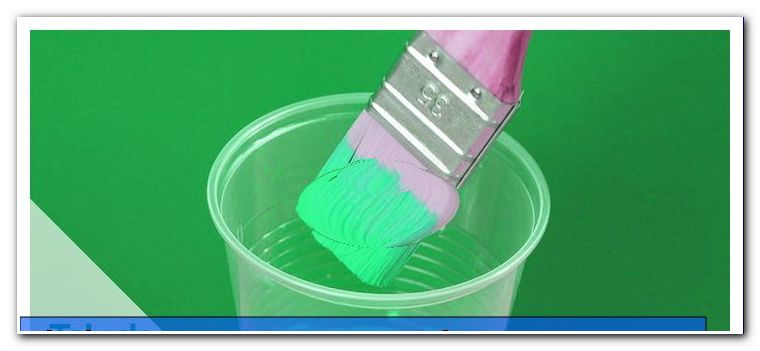 Prevent mistakes and cracks
Prevent mistakes and cracks
One of the most common problems with overcoating latex paint with disperse paint is cracking. Especially on the shiny variants of the wall paint with synthetic resin keep more paint spreads bad. Although they then dry off and adhere at first, but they tear up and thus create an ugly appearance.
For this reason, it is so important to apply at least initially only very thin layers and to let them each dry for several hours. The samples also help to avoid effort and errors. If cracks occur, they will usually show up on the second day of the described procedure.
The use of primer and paint abrading completely prevents cracking. Who does not want to carry out these measures unnecessarily, should put on high-quality wall paints with high opacity and the already mentioned thin layers. Even repainting with latex paint will not cause any bumps.
Coat latex paint with latex

Anyone who simply bothers about the glossy surface of the latex paint or wants to paint it in a new tone, can save a lot of effort. All you have to do is use latex paint again.
The strong glossy look can be changed with the use of semi-gloss latex paint. Although it still has a slight shimmer, it is much more discreet and therefore looks decorative outside of the kitchen and bathroom too.
When painting with latex paint, there is little to note. So the ground should be free from dirt and dry. It is therefore beneficial to wipe the surface thoroughly with soapy water and clear water and let it dry in the air for a few hours. Only then the new color is brought to the wall. Depending on the color difference between old and new paint should be at least two coats. When changing from dark to light, even four or more layers may be needed until complete and even coverage is achieved.
Mix latex paint
 Many are critical of latex paints, as these are supposedly found only in white and very few other tones. The tone of the wall color can be determined quite easily individually. On the one hand, there is the possibility of mixing the desired color in some DIY stores and retailers. The advantage here is that the exact tint can be mixed easily. If another room is to be painted in the same color, make corrections or the original amount is not enough, so is not a cumbersome self-mixing of an exact look needed. Even unsightly deviations are not risked.
Many are critical of latex paints, as these are supposedly found only in white and very few other tones. The tone of the wall color can be determined quite easily individually. On the one hand, there is the possibility of mixing the desired color in some DIY stores and retailers. The advantage here is that the exact tint can be mixed easily. If another room is to be painted in the same color, make corrections or the original amount is not enough, so is not a cumbersome self-mixing of an exact look needed. Even unsightly deviations are not risked.
Those who prefer to create a unique sound should first seek advice on the right tinting color. Latex wall paints can not be successfully combined by any means. So the choice must fall on special tinting colors, preferably the same company.
Tips for quick readers
- Genuine latex paint is expensive
- can be crossed over by rubber hard
- Modern latex paints contain synthetic resin instead of rubber
- Latex paint is easy to recoat with latex paint
- Emulsion paint keeps on latex only with preparation
- Sand paint, remove wallpaper or plaster before painting
- use diluted emulsion paint as a primer
- Apply paint in several thin layers
- thick layers lead to superficial cracking
- in case of bad adhesion use special primer
- Test the color and result in a small area
- Allow each layer to dry for several hours
- Latex paint can be tinted with the right means


 Prevent mistakes and cracks
Prevent mistakes and cracks 